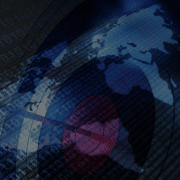Analyzing Data Center Energy Consumption By Using Business Metrics
About five years ago, the industry first heard about Digital Service Efficiency (DSE) – a method that was designed by eBay to help the company capture a holistic picture of their data center energy consumption and performance.
The initiative was then made public in an effort to assist other organizations establish their own data center energy consumption benchmarks and goals, and compare live system performance against those benchmarks and goals to determine actual efficiency levels.
While they tracking their data center’s power usage effectiveness (PUE), which illustrates how efficient a data center’s electrical and mechanical systems are, they felt like something was missing. Calculating PUE didn’t offer them insight into how efficiently their data center equipment (such as servers) was being used. The DSE initiative was formed to fill this gap.
Earlier this year, the team of eBay engineers who created the DSE initiative received a patent for it. With this news, we thought it would be a good time to revisit the data center productivity metric they introduced a few years ago. Even though it was created based on eBay’s core competency – e-commerce – there are still some lessons to be learned.
In eBay’s case, to measure performance and data center energy consumption, they chose to specifically measure how many online business transactions are completed per kilowatt-hour consumed. They calculated this by analyzing four metrics:
- The type of performance they wanted to measure (transactions, or the number of online purchases and sales)
- Cost per transaction (they measured cost per megawatt-hour, per user and per server)
- Environmental impact (amount of carbon dioxide produced per transaction)
- Revenue per transaction (they measured revenue per transaction, per megawatt-hour and per user)
Then they base their data center improvement goals around those metrics – goals like reducing cost per transaction by a certain percentage, for example, or increasing transactions per kilowatt-hour by a certain percentage.
The organization believes that, by substituting your own unique business metric in place of the metric they used – online business transactions – you’ll be able to create your own, unique way of measuring data center productivity and efficiency, too.
What performance metric could you use to measure and benchmark data center energy consumption? Here are a few ideas:
- Healthcare: number of patients seen or number of appointments set
- Hospitality: number of guests who stay onsite or number of reservations
- Manufacturing: number of widgets produced
- Financial: number of transactions
Read full article





